
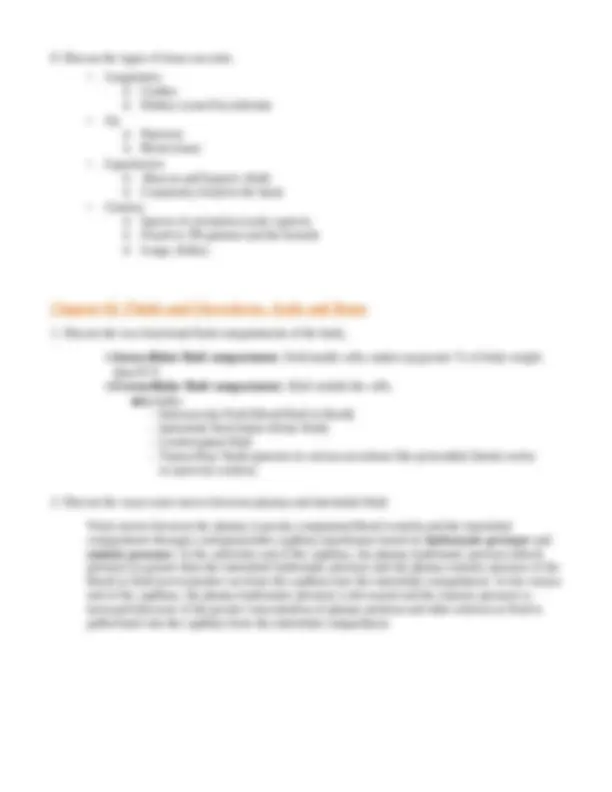
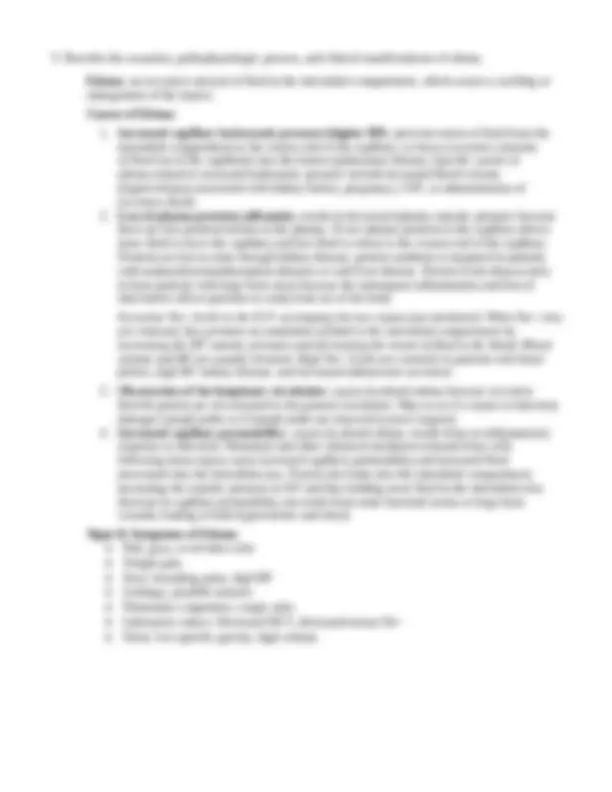
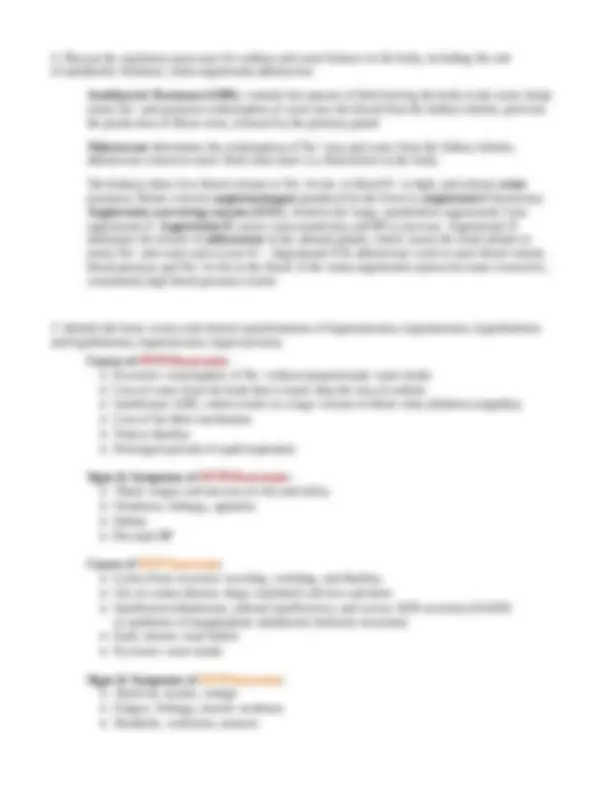
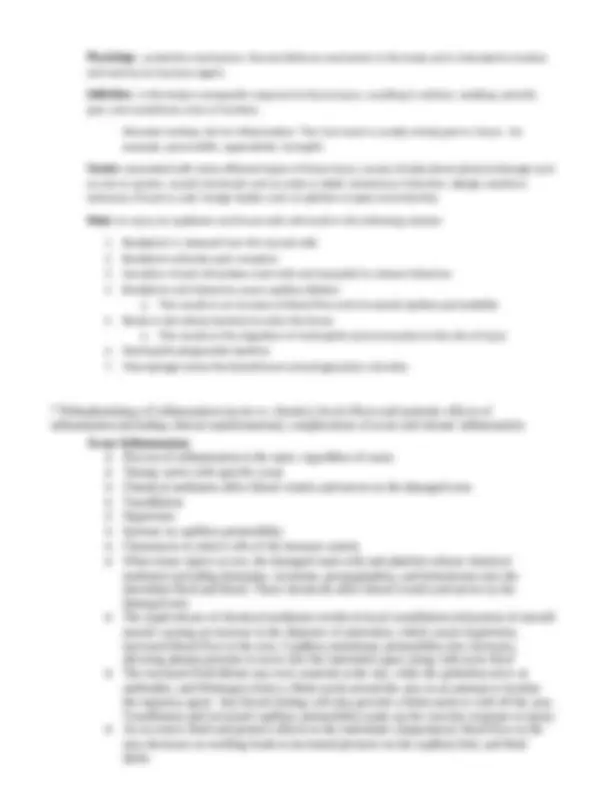
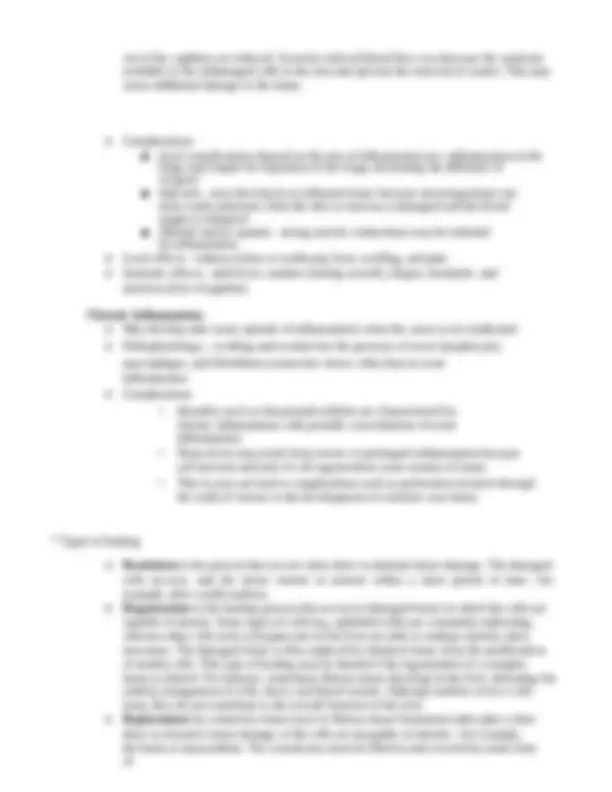
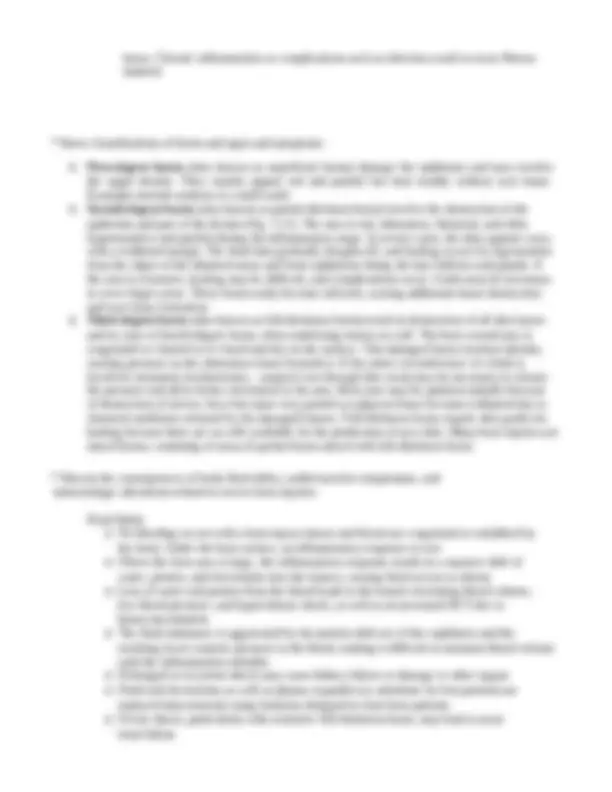
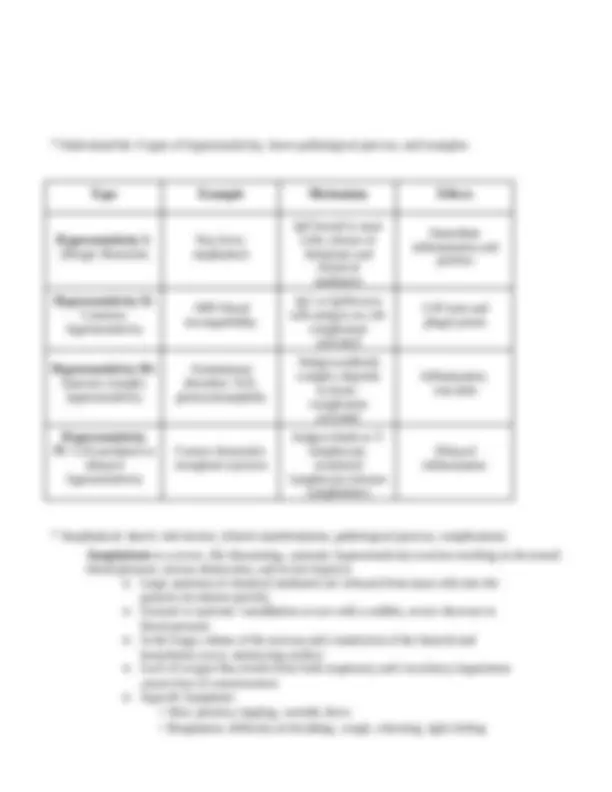
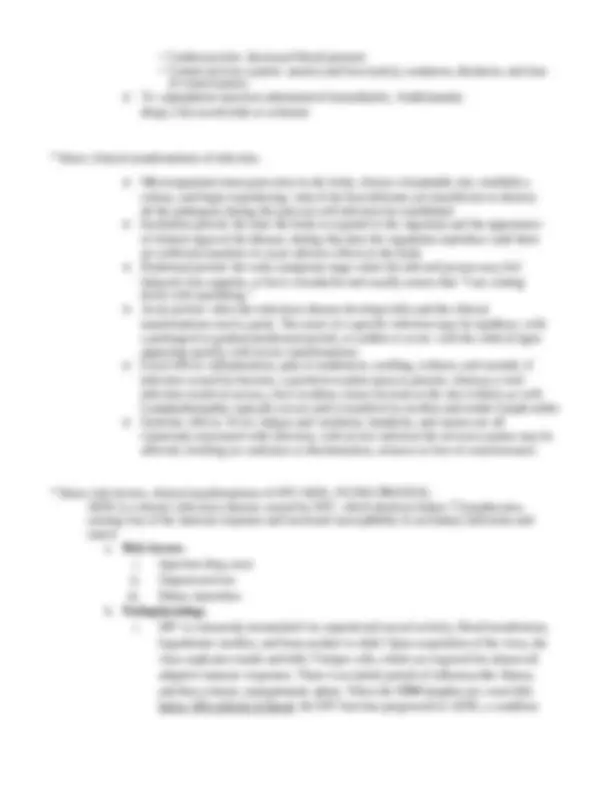
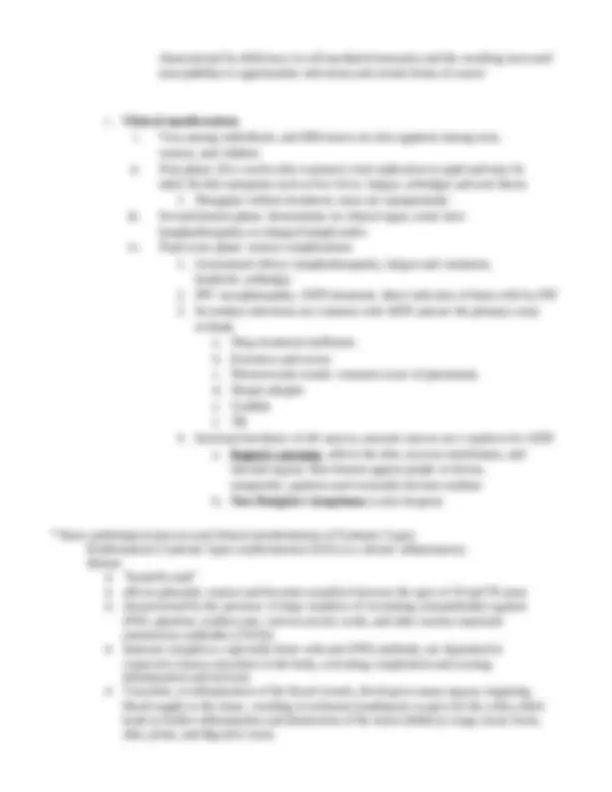
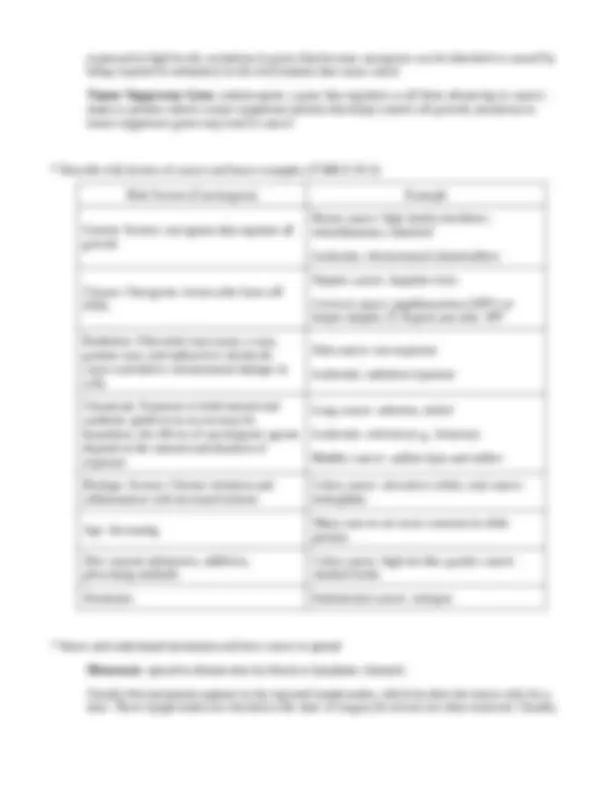
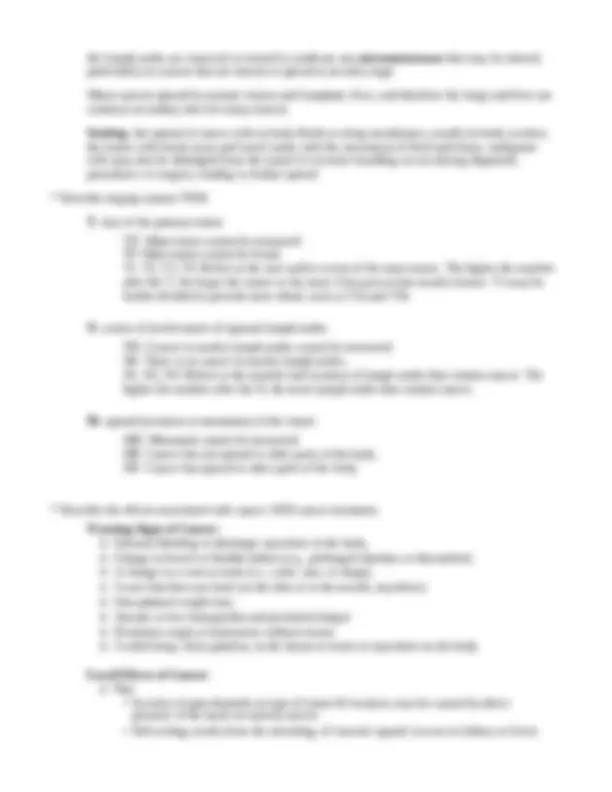

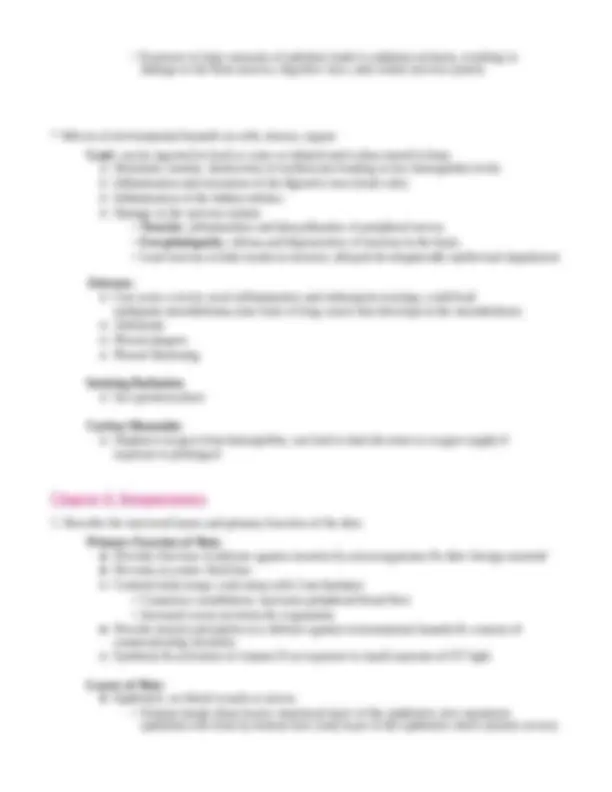
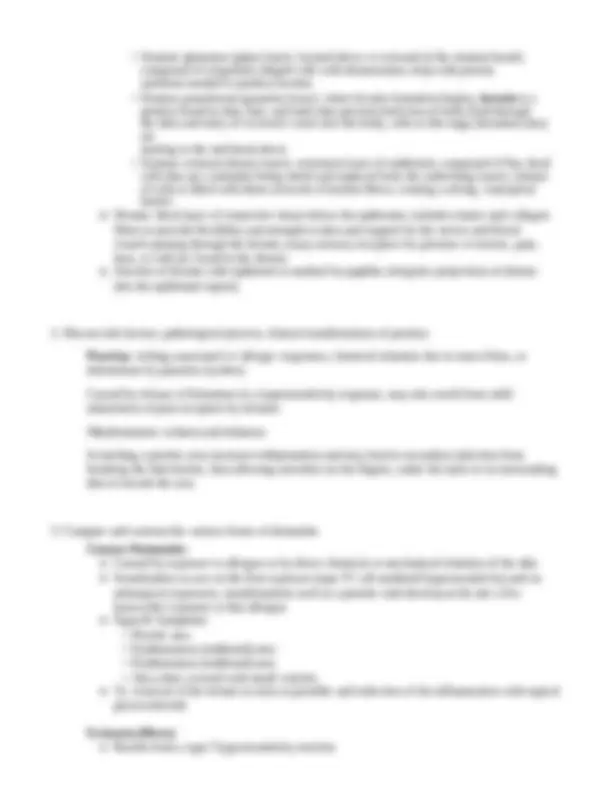
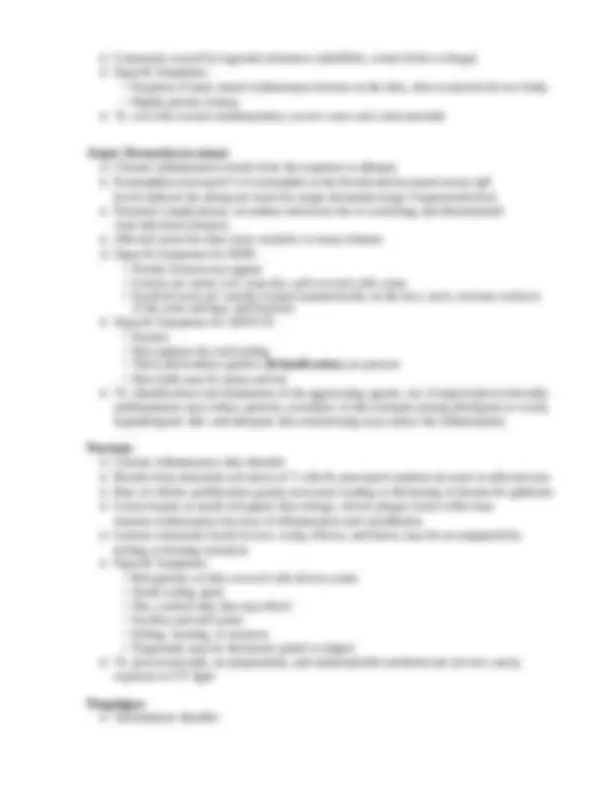

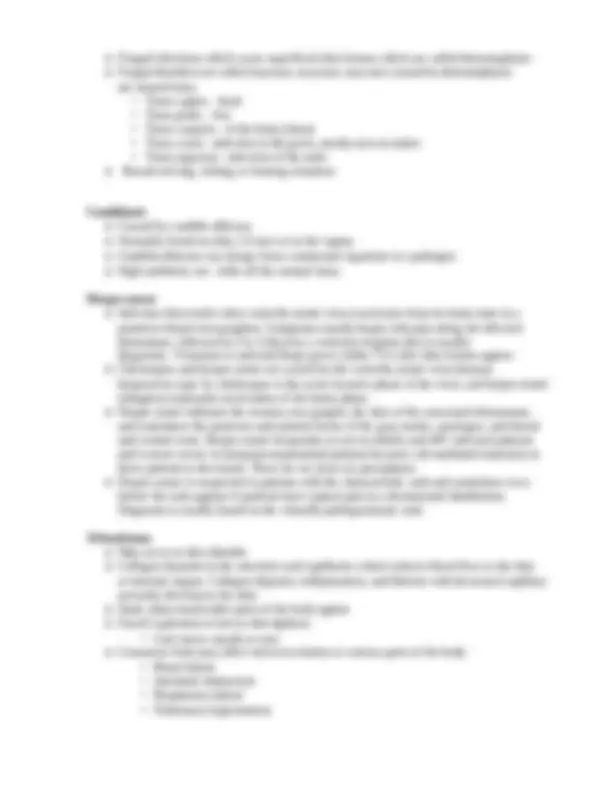
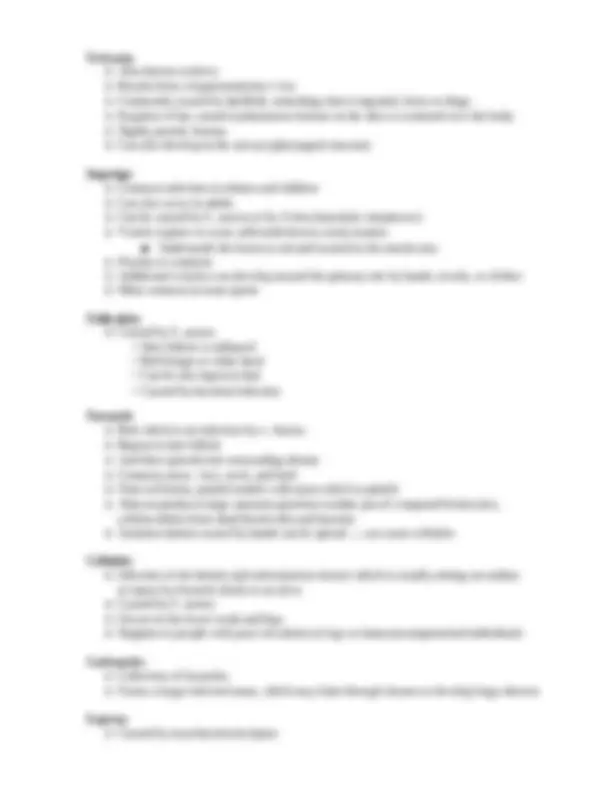

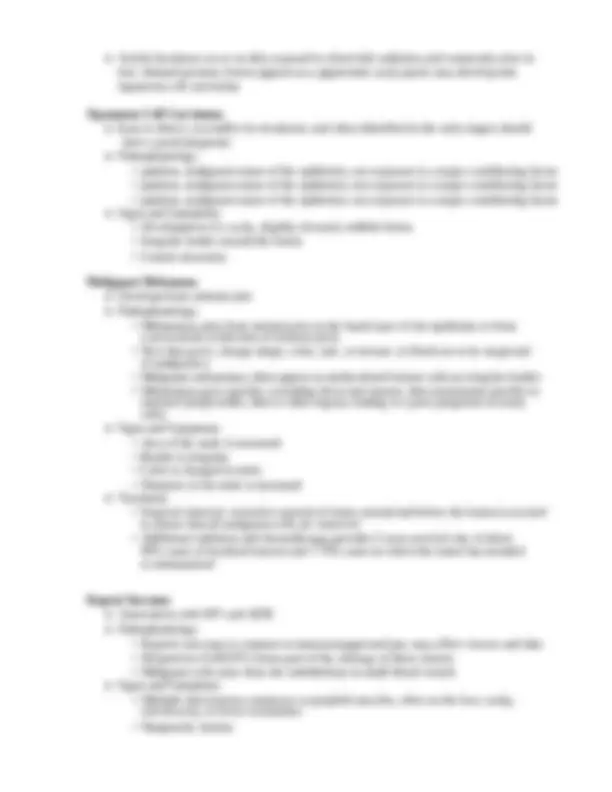



Study with the several resources on Docsity

Earn points by helping other students or get them with a premium plan


Prepare for your exams
Study with the several resources on Docsity

Earn points to download
Earn points by helping other students or get them with a premium plan
Community
Ask the community for help and clear up your study doubts
Discover the best universities in your country according to Docsity users
Free resources
Download our free guides on studying techniques, anxiety management strategies, and thesis advice from Docsity tutors
NR283 Pathophysiology Study Guide for Exam 1
Typology: Study notes
1 / 29

This page cannot be seen from the preview
Don't miss anything!






















1 & 2. Describe the cellular adaptations made in each of the following processes and their causative factors: atrophy, hypertrophy, hyperplasia, dysplasia, and metaplasia Atrophy - a decrease in the size of cells, resulting in a reduced tissue mass. Common causes include reduced use of the tissue, insufficient nutrition, decreased neurologic or hormonal stimulation, and aging Hypertrophy - an increase in the size of individual cells, resulting in an enlarged tissue mass. This increase may be caused by additional work by the tissue, as demonstrated by an enlarged heart muscle resulting from increased demands Hyperplasia - an increased number of cells resulting in an enlarged tissue mass. Hyperplasia may be a compensatory mechanism to meet increased demands, or pathologic when there is a hormonal imbalance, or it may mean there is an increased risk of cancer Dysplasia - tissue in which the cells vary in size and shape, large nuclei are frequently present, and the rate of mitosis is increased. May result from chronic irritation infection, or may be a precancerous change. Detection of dysplasia is the basis of routine screening tests for atypical cells such as the Pap smear Metaplasia - when one mature cell type is replaced by a different mature cell type. May result from a deficit of vitamin A. Metaplasia is sometimes an adaptive mechanism that provides a more resistant tissue (i.e. when stratified squamous epithelium replaces ciliated columnar epithelium in the respiratory tracts of cigarette smokers. The new cells make a stronger barrier but they decrease defenses for the lungs because they lack cilia)
Causes of HYPOcalcemia: o Hypoparathyroidism- decreased parathyroid hormone causes decreased intestinal Ca2+ absorption o Malabsorption syndrome- decreased intestinal absorption of vitamin D or Ca2+ o Deficient serum albumin o pH > 7.45 (alkalosis) Signs & Symptoms of HYPOcalcemia: o Tetany- involuntary skeletal muscle spasm, carpopedal spasm, laryngospasm o Tingling fingers o Mental confusion, irritability o Arrhythmias, weak heart contractions
Physiology - protective mechanism. Normal defense mechanism in the body and is intended to localize and remove an injurious agent. Definition - is the body's nonspecific response to tissue injury, resulting in redness, swelling, warmth, pain, and sometimes a loss of function. Disorders ending -itis for inflammation. The root word is usually a body part or tissue - for example, pancreatitis, appendicitis, laryngitis Causes: associated with many different types of tissue injury, causes include direct physical damage such as cuts or sprains, caustic chemicals such as acids or alkali, ischemia or infarction, allergic reactions, extremes of heat or cold, foreign bodies such as splinters or glass and infection. Steps: an injury to capillaries and tissue cells will result in the following reaction
tissue. Chronic inflammation or complications such as infection result in more fibrous material
Immunologic: o Infection of burn injuries increases tissue loss in the area, often converting a partial- thickness burn to a full-thickness burn o Common microbes involved in burn injury infections include Pseudomonas aeruginosa, Staphylococcus aureus (including drug-resistant strains), Klebsiella, and Candida o When serious infection develops, there is risk of microorganisms or toxins spreading throughout the body, causing septic shock and other complications. Treatment involves rapid excision or removal of the damaged and infected tissue, application of antimicrobial drugs, and replacement with skin grafts or a substitute covering
o Presence of numerous ANAs, especially anti-DNA, as well as other antibodies in the serum is indicative of SLE o Signs & Symptoms:
a. Pemphigus: If you have it, your immune system attacks healthy cells in your skin and mouth, causing blisters and sores. No one knows the cause. Pemphigus does not spread from person to person.
N eoplasm- tumor; a cellular growth that’s no longer responding to normal body controls; cells continue to reproduce when there is no need for them; this excessive growth deprives other cells of nutrients o Many neoplasms are unable to function as normal tissue cells because they consist of atypical (abnormal) or immature cells.
the lymph nodes are removed or treated to eradicate any micrometastases that may be missed, particularly in cancers that are known to spread at an early stage Many cancers spread by normal venous and lymphatic flow, and therefore the lungs and liver are common secondary sites for many tumors Seeding- the spread of cancer cells in body fluids or along membranes, usually in body cavities; the tumor cells break away and travel easily with the movement of fluid and tissue; malignant cells may also be dislodged from the tumor if excessive handling occurs during diagnostic procedures or surgery, leading to further spread